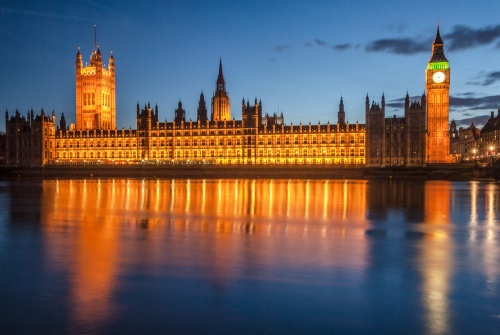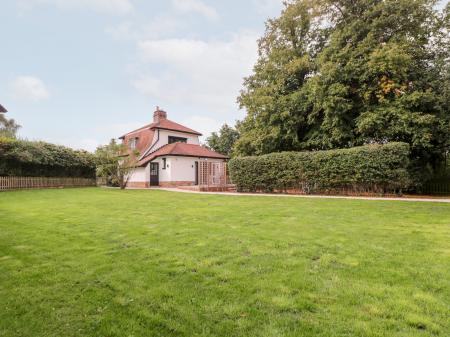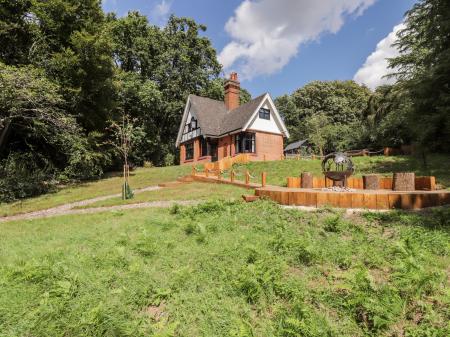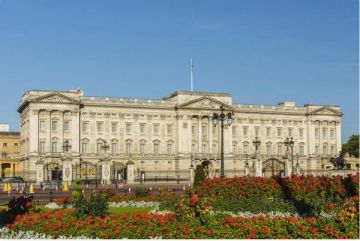
History
Tradition suggests that a Roman temple to Apollo stood here by the River Thames. That temple was supposedly destroyed in an earthquake, and no trace of it remains, if, indeed, it ever existed. we are on safe historical foundations when it comes to the Saxon period, for we know that a timber church dedicated to St Peter was built here in the 8th century.
To distinguish the new church from St Paul's in the centre of London, the new church was known as the West Minster, while St Paul's was known as the East Minster. The name was contracted over time until the area around the church became known as Westminster. In the 10th century Westminster church was re-established as a Benedictine monastery.
In the early years of the 11th century, King Cnut built a royal palace on Thorney Island, a rise of high ground in the River Tyburn. The most influential Saxon king, however, was Edward the Confessor, who founded Westminster Abbey and built a new royal palace beside his great new monastic foundation.

Westminster Hall
When William the Conqueror came to the throne he used the existing Palace and Abbey as his base of power in London, but it was his son, William Rufus, who began to transform the earlier Saxon palace. William Rufus began building Westminster Hall in 1097 and created the largest royal hall in Europe. The Hall was used as a ceremonial centre, for banqueting and entertaining.
Over the next few centuries, several of the most important administrative arms of government, such as the Court of Common Plea and the Chancery, were established at Westminster Hall. It was not until the 13th century, however, that Westminster was used as the centre for parliamentary gatherings.
The first true Parliament, called by Simon de Montfort in 1265, probably met in the chapter house of nearby Westminster Abbey, but by the reign of Edward I gatherings met in the king's private chamber, called the Painted Chamber, or in the neighbouring White Chamber.
Because the Palace was first and foremost a royal residence, there was no venue set aside for Parliament to meet. The House of Lords met in the Queen's Chamber, then in 1801 moved to the Lesser Hall. The House of Commons often met in the Chapter House of Westminster Abbey.
It was only when Henry VIII left Westminster Palace for Whitehall in 1512 that Westminster Palace became the permanent home of Parliament.
Aside from the Hall itself, other remains of the medieval palace include the Chapel of St Mary Undercroft, begun by Edward I in 1297 for the royal household and court. Across the road from the current Palace is another medieval survivor, the Jewel Tower, built in 1365 by Edward III as a storeroom for royal gold, silver, and jewels.
Over the following centuries, it became a repository for all manner of royal treasure, including clothing, children's toys, even the royal chess set. Today the Jewel Tower is administered by English Heritage and is regularly open to the public.

London bus
The Fire
On 16 October 1834, a pair of stoves used to burn old tally sticks for the Exchequer started a fire that soon swept through the timber-framed Palace. It was the worst fire in London's history to that point, save for the Great Fire of London. Records stored in the Jewel Tower were saved only because the wind was blowing the other way. Apart from the Jewel Tower only the medieval Hall, cloister, and Chapel of St Mary Undercroft were saved.
An architectural competition was launched to choose a design for a new Palace of Westminster. The winning entry was by Sir Charles Barry, who proposed a complex of buildings in Gothic style, incorporating the surviving medieval buildings. Barry enlarged the site by reclaiming 8 acres of land from the River Thames. He estimated a construction time of 6 years, but in the end, construction took 30 years, at a cost of over 2 million pounds.
Barry was aided in his work by Augustus Welby Pugin. Indeed, Pugin probably deserves greater credit than Barry for the sumptuous Gothic detail which decorates the Palace inside and out.
Neither man lived to see the Palace completed; Barry died in 1860, and the job of overseeing the final decade of construction fell to his son Edward. As for Pugin, the strain of work told on his fragile health and he was committed to Bedlam, what we would today call an insane asylum, and died in 1852.
Victoria Tower
The central block of the Palace is flanked by striking towers. To the south is Victoria Tower, which at 325 feet was the tallest square stone tower in the world. The tower was intended to serve as a royal entrance, with archways through the tower base large enough for Queen Victoria's royal coach to pass through for State Openings of Parliament. The Victoria Tower was also intended to serve as an archive storage for Parliamentary records, a service it still fulfils.

The Elizabeth Tower (Big Ben)
Let's clear up a common misconception. Big Ben is not the same thing as the iconic clock tower, also known as the Elizabeth Tower, which overlooks Westminster Bridge and Parliament Square. Nor does the name refer to the huge clock face, designed by AW Pugin.
The name Big Ben applies to the hour bell that hangs within the Clock Tower. Quite why the 'Great Bell' gained its popular nickname is a subject of historical debate, but it may have been named after Sir Benjamin Hall, First Commissioner for Works, or perhaps for a heavyweight boxer named Ben Caunt.
Visiting
Visitors can take guided tours of the Houses of Parliament that include Westminster Hall, the Royal Gallery, Lords Chamber, Commons Chamber, St Stephens Hall, and other major areas of the Palace. You can also opt to take afternoon tea on the Riverside Terrace, overlooking the Thames.
Tickets can be purchased online or on the day at the Ticket Office in Portcullis House, Victoria Embankment. These tours are open to anyone, although because of the tour length they are not suitable for children under 5.
UK residents can also take a free guided tour of the Elizabethan Tower and Big Ben, by arrangement through an MP or member of the House of Lords. Tours ascend 334 steps to the top of the tower and go behind the clock dials to the mechanism room where you can see how the clocks work. Demand for these tours is very high, and they are usually booked 6 months ahead.




 We've 'tagged' this attraction information to help you find related historic attractions and learn more about major time periods mentioned.
We've 'tagged' this attraction information to help you find related historic attractions and learn more about major time periods mentioned.



